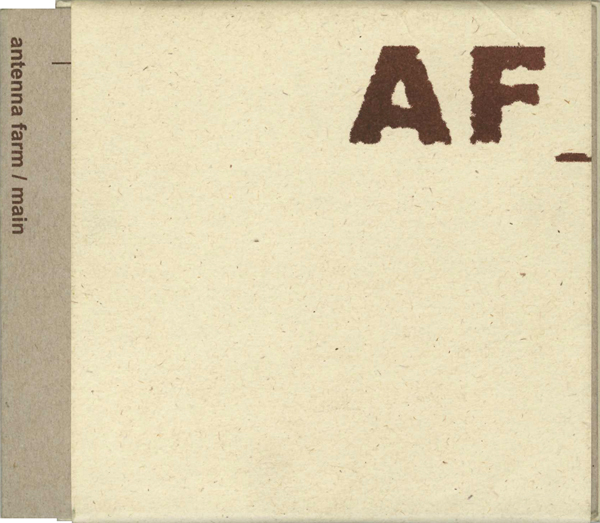It seems like only a few weeks ago that I was reviewing the last batch of ECLAT releases (and that was largely due to my tardiness), yet here we are in 2017 with another pair of releases. I gather that these were released fairly late in the day of 2016 because label-mogul Seth Cooke wanted to get them out that side of the new year. Check out the website for a bundle deal — all of them have lovely packaging and what could falsely be described as “copious” liner notes (there’s a minimum of information about source material etc, which is part of the label concept, possibly, of not giving the game away).
Simon Whetham – Drowning Electret
 “Whetham at his most bloody-minded, the long, slow death of hydrophone recording” runs the blurb and leaves it at that. I’m not entirely sure what that means or what that might sound like, but what this CD has is a background of white noise and some pops and clicks foregrounded. Difficult to say how much it’s prepared or happenstance, but it’s certainly conceivable that this is the hydrophone’s workings coming to some sort of demise.
“Whetham at his most bloody-minded, the long, slow death of hydrophone recording” runs the blurb and leaves it at that. I’m not entirely sure what that means or what that might sound like, but what this CD has is a background of white noise and some pops and clicks foregrounded. Difficult to say how much it’s prepared or happenstance, but it’s certainly conceivable that this is the hydrophone’s workings coming to some sort of demise.
I’m going to work on the basis that most of this record documents the decay of a hydrophone, presumably due to faulty casing or similar. So you get this odd effect where whatever’s not right in it seems to create these rhythmic or quasi-rhythmic sections — repetitious phrase-ishes that mutate in opaque cycles. Like every good sound-art record, this isn’t mastered for full volume effect (as is right and just) so there’s quite a dynamic range in this mostly-fairly-quiet number. I’m not a headphones kind of guy, but it’s definitely worth a listen on cans for full effect. Particularly as it’s one of those records that the fridge engine seems to sing along to. Which becomes doubly problematic as there’s a long period of very gradual decline in the recording, disappearing into a nothing-y vortex with only brief restitutions sporadically.
It’s a subtle and a quiet record and one that, despite the “bloody-minded” quip of the blurb, matches Whetham’s usual taste and nuance for sound. Assuming it’s process-based (most ECLAT seem to be that), it’s one of those where it’s a great recording of something. It never quite rises above a burble, but there’s enough detail there to make it a somewhat agonising listen, insofar as it’s worth concentrating on entirely (rather than it being rubbish, you understand). Applause, Herr Whetham.Bang The Bore – Twelve Tapes
 So full disclosure here — I was part of an earlier recording and performance of this a few years ago when I was more active on bangthebore.org (which itself was more active, having gone into a partial retreat at this point in time). In Southampton’s John Hansard Gallery, myself and “the hardman of HNW” Clive Henry tended to a load of tape players playing recordings of the note B (493.88hz) in a variety of car parks. Our part of the performance wasn’t particularly sophisticated — we just turned volumes up and down and occasionally flipped tapes over. My overriding memory of it was that that way the sound interacted with the space had a really exhausting effect; when, after a few hours, one of us had the bright idea to turn it down a little, it had the distinct effect of disengaging a vice from your temple.
So full disclosure here — I was part of an earlier recording and performance of this a few years ago when I was more active on bangthebore.org (which itself was more active, having gone into a partial retreat at this point in time). In Southampton’s John Hansard Gallery, myself and “the hardman of HNW” Clive Henry tended to a load of tape players playing recordings of the note B (493.88hz) in a variety of car parks. Our part of the performance wasn’t particularly sophisticated — we just turned volumes up and down and occasionally flipped tapes over. My overriding memory of it was that that way the sound interacted with the space had a really exhausting effect; when, after a few hours, one of us had the bright idea to turn it down a little, it had the distinct effect of disengaging a vice from your temple.
And I’m going to say that those restrictions on source material and recording have made this from a “nice to take part in” piece to something that’s worth listening to; there’s definitely minimal signs that anyone playing along with the tapes is actually doing so. The collected recordings of car parks have a mildly haunted ambience (that’ll be the constancy of the B sine), but the mild discrepancies across fidelities (caused by multiple tape players) and the general presence of low-end throb make this a really peculiar sound; it’s familiar as “car park sounding”, but also there’s hiss and accidentally-tonal things that throw it just this side of music. I’m not a one for found-sound or soundscape type things and the presence of “not that” in this makes it more appealing. Moreover, the presence of actual liner notes makes me happy. I’m getting to a bit of a zealot about that. Which is probably the fault of opaque sound-art labels “wanting the sound to stand for itself”, which isn’t a sentiment I find particularly helpful. hashtag UnwarrantedAside
So the nature of car parks is that they’re typically large resonant spaces; you play sine waves in them and they tend to fill out the ambience. And then you get a siren going through and something of the combination of acoustic environment with low concrete ceilings create odd effects on the core sounds; that and the combination of multiple car park recordings at once mean you get a really odd and quite beguiling record. Unlike the previous, I’d definitely suggest listening to this on the stereo, because traffic noises from your local environment make it difficult to map the sources, which is arguably a more interesting listen.Yeah. Coming at the end of 2016 there’s a danger that these releases didn’t get picked up by many so I’d recommend you treat yourself to them, especially as you’ve probably just committed to eating more healthily/ drinking less and will therefore have a load of money left over for buying records, innit?
-Kev Nickells-



